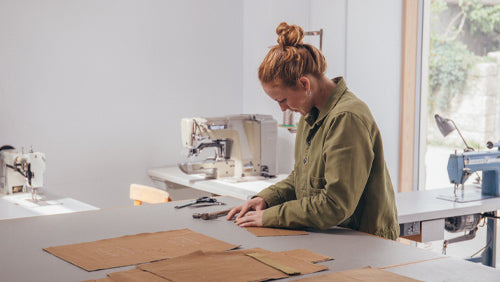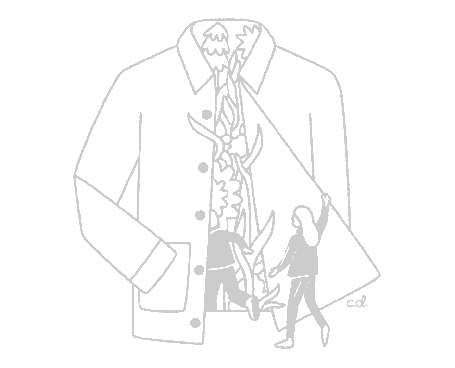
Denim is a fabric that means something to everyone. And more than likely, it’s going to mean something different. A favourite pair of jeans or jacket, a meaningful recollection or event, perhaps a memorable advertising campaign from a favourite brand. But one thing that we can agree on when it comes to denim is that it’s iconic: Classic, reliable, comforting, never out of style and a cornerstone of the modern wardrobe. Interestingly, denim is a young fabric but that doesn’t mean its short history doesn’t pack a punch. During the last hundred years, it’s gone from workwear to worldwide fashion icon. Much of this history resides within the United States, but a lesser known nation has arguably had just as much influence, impact and legacy when it comes to denim: Japan.

Spurred on by mid-twentieth century American fashions as a result of post-war occupation, Japan’s obsession with denim began in the era of Elvis and James Dean. Infatuated with the rebel style of American youth, the Japanese adopted denim as their second skin during the 1950s and 60s. So much so that when the plentiful stock of vintage selvedge Levi’s began to dry up in the 1970s, Japan began to weave its own denim and make its own mark. With such fastidious attention to detail and meticulous engineering, Japan combined its artisan traditions with an eye for innovation, leading to some of the best denim fabrics in the world being woven. Some might even argue that the Japanese re-interpretation of denim is even better than the American original…Which has resulted in a host of Japanese denim mills rising to the fore during the last thirty years, changing the contemporary market irreversibly.
In 2021, Japanese denim is coveted. As we move into a post-Cone Mills White Oak era, even denim giants like Levi’s are looking to Japan. Many leading brands, designers and creatives now source their denim from what has become a focal point for the industry. There’s an element of myth and intrigue with Japanese denim, it is shrouded in ancient techniques and traditions but in contrast it doesn’t ignore progress and innovation. It merges these two opposing worlds perfectly, creating a product that has become a hallmark of quality in the modern age. Even an art form, if you will.
One such area in Japan has quite literally made a name for itself on the back of its dedication to denim - Kojima. Known as ‘Denim City’ and home to Jeans Street, Kojima is a coastal area on the southern coast of Honshu, just an hour’s journey from Okayama City and a couple of hours east of Hiroshima. It is here that there are more denim brands, mills and jeans stores per square meter than anywhere else in the world. Jeans hung on lines between buildings serve as a novel reminder that if it’s denim you’re looking for, you’re in the right place. Rewinding back to those post-war years, Kojima was an area which had traditionally manufactured school uniforms but seized the opportunity to make denim when American sources dried up. While many recognisable names have come out of Kojima, one mill in particular has brought Japanese denim to new heights: Collect Mill.

Established in 1992 in Kojima, Okayama Prefecture, Collect Mill was founded by Hisao Manabe and his friend Masahiro Suwaki. Born in 1954, Manabe entered the textile industries during his thirties and was quickly enchanted by the charm of indigo dyeing after he met indigo master Osamu Arai in 1988. Named after Manabe’s collecting tendencies (fabric and denim in particular), Collect originally intended to source fabrics and sell them to garment makers and brands in Japan who were leading the denim drive at the time. However, Manabe found that was a difficult task for a small new company and instead decided to create his own fabrics. A year after Collect was born, Manabe purchased his first vintage shuttle looms and started out on a journey which is still very much in motion today.
Collect has become a household name not only in Japanese denim, but the world over. Forming a part of Japan Blue Co., Collect Mill focuses on fabric production and supplies a number of brands worldwide with denim and adjacent fabrics. Japan Blue Co. has built a small empire of expertly skilled artisans who turn their hands to weaving, dyeing and all manner of the denim supply chain.

Initially located just north of the famous port city, in Nakuane, Collect moved their looms to a building just minutes from Kojima Station. One reason for this was because Manabe wanted to increase tourism to the city, as well as offering an insight into their production. As a result, Collect Mill is one of the only Mills which ‘denim heads’ and tourists alike can go inside the Mill to get a glimpse of those old looms at work.
On the eve of its twentieth anniversary, Collect is known for producing fabrics which stand the test of time and marry vintage inspiration, texture and tone with modern innovation. Priding itself on producing some of the most distinguished and highest quality denim fabrics anywhere, and offering of thousands of fabrics to choose from including denim, chino, sashiko and more.

Collect humbly claim that it is “a textile manufacturer located in Kojima, Kurashiki-city, Okayama Prefecture” but the mill’s continuing impact exhibits what a powerhouse it has become. Continuing to impact the weave of the denim world, Collect prides itself on creating innovative fabrics through inherited technology, disseminating Japanese manufacturing across the globe and sharing the “universal value of vintage”. It is this unique approach - the merging of old and new - which makes Collect, and the fabrics it produces, truly special. While many of their fabrics are woven on vintage Toyoda GL-9 shuttle looms (they have 9 in total and 2 ‘donor’ looms as spare parts are no longer available) and the output emphasizes the unique vintage-inspired characteristics of Collect fabrics, this is by no means a company which is stuck in the past. In contrast, Collect is very much leading the future direction of denim through fabric experimentation and innovation.

Another hallmark of Collect is their selection of cotton. While their extensive choice of fabrics certainly spans a number of continents, a signature of the Mill is cotton sourced from Zimbabwe. Providing a great strength, longer staple and high degree of whiteness, Zimbawabe cotton used by Collect is hand harvested and hand cropped. This results in a very high quality yield, as well as a cotton which lends itself to texture, longer wear and heavier fades. The Zimbabwe cotton is often woven at a low tension weave, providing the textbook Japanese texture and ‘slub’ that so many denim lovers pine for. In addition, it holds a very deep indigo when dyed, adding to higher contrast wear patterns and patina the more it is worn.
Which brings us back to why Collect do what they do so well. The fabric woven by mill gets better with age, just like a fine wine or whiskey. What Collect create is then transposed into a garment which will become the vintage of the future. And if you care for that garment, it’ll care for you. Pass it down, like a family heirloom, with the patina and good times to show for it.
...
Batch No.9 - The Japanese Denim Jacket
Available Saturday, the 9th of October at 9AM (BST). Only 850 jackets will be available. Each one made using a 13.5oz denim woven by Collect Mill, Japan.



